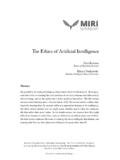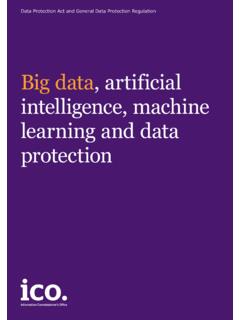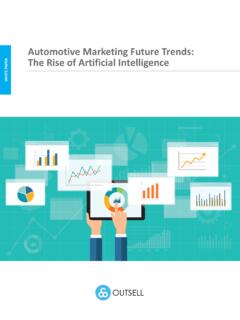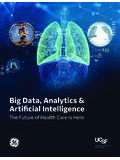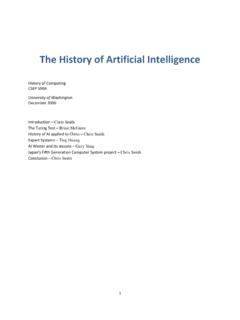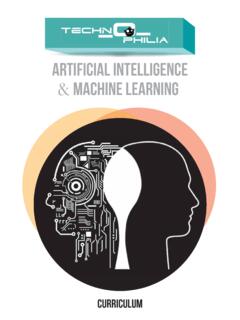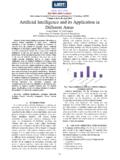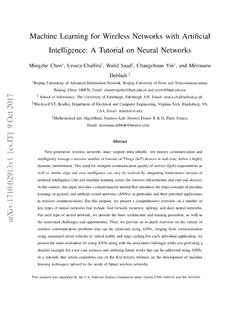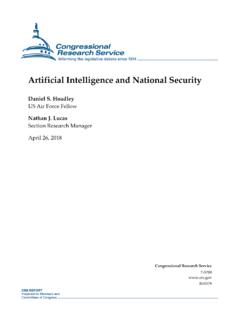Transcription of The Next Generation of Medicine: Artificial Intelligence ...
1 Next Generation of medicine : Artificial Intelligence and machine LearningTM Capital Industry Spotlight Case Study: Growth Equity Capital Raise Analytics 4 Life raised $ million through the sale of Series B Convertible Preferred StockAnalytics 4 Life, a Toronto-based developer of Artificial Intelligence -enabled medical imaging solutions, has raised $ million through the sale of Series B Convertible Preferred Stock. Analytics 4 Life, led by former Sapheon, Inc. CEO Don Crawford, is focused on using Artificial Intelligence to improve, simplify and reduce the cost of diagnosing coronary artery disease ( CAD ), a $6 billion global market.
2 The Company s non-invasive medical device, CorVista , applies machine learned solutions to assess the presence of significant CAD, using physiological signals naturally emitted by the body. Beyond CAD, Analytics 4 Life has begun to apply its proprietary signal processing and Artificial Intelligence platform to developing new products that address other cardiac conditions and disease states in neurology and oncology. TM Capital served as financial advisor to Analytics 4 Life in connection with this transaction. The Company plans to use the proceeds to complete the final stage of testing and apply for FDA approval.
3 In addition, the financing will enable Analytics 4 Life to build the necessary team to bring this potentially transformative diagnostic solution to a wide audience of physicians and 2 Introduction Artificial Intelligence ( AI ) applications, powered by an influx of big data and advancements in computing power, are positioned to transform major sectors, while simultaneously creating new industries. AI is expected to contribute up to $ trillion to global GDP by The AI industry has the capability to not only augment and improve, but also to replace many tasks that have been historically executed by humans. Simultaneously, AI will create many new jobs that are yet to be identified.
4 According to the Department of Labor, 65% of the school children [in 2016] will be eventually employed in jobs that have yet to be created. New technologies and innovations in AI will transform most consumer, enterprise and government markets around the world. However, the commercial uses for AI applications are still nascent and ripe for investment. As such, the industry is attracting strong interest from a broad range of investors. This report will review the important role that AI plays in healthcare, but first we will summarize the definition of AI and its evolution to date. Defining Artificial Intelligence and machine learning AI refers to multiple technologies that can be combined in different ways to sense, comprehend and act with the ability to learn from experience and adapt over time (See Figure 1).
5 In basic terms, AI is a broad area of computer science that makes machines and computer programs capable of problem solving and learning , like a human brain. AI includes Natural Language Processing ( NLP ) and translation, pattern recognition, visual perception and decision making. machine learning ( ML ), one of the most exciting areas of AI, involves the development of computational approaches to automatically make sense of data this technology leverages the insight that learning is a dynamic process, made possible through examples and experiences as opposed to pre-defined rules. Like a human, a machine can retain information and becomes smarter over time.
6 Unlike a human, a machine is not susceptible to sleep deprivation, distractions, information overload and short-term memory loss that is where this powerful technology becomes exciting. The Evolution of AI and ML AI is not a new concept in fact, much of its theoretical and technological underpinning was developed over the past 60 years. Although AI has been a part of our day-to-day lives for some time, this technology is at an inflection point, largely due to major recent advances in deep learning applications. Deep learning is a sub-set of ML that utilizes networks which are capable of unsupervised learning from data that is unstructured or unlabeled. The neural networks that underpin deep learning capabilities are becoming more efficient and accurate due to two significant recent technological advancements: an unprecedented access to big data and an increase in computing power.
7 The effectiveness of neural networks correlates 1 PwC, AI to drive GDP gains of $ trillion with productivity, personalisation improvements (June 27, 2017) Figure 1: What is AI and ML? The AI industry encompassing a broad set of information systems inspired by human learning and reasoning systems is a $ billion market that is expected to grow dramatically to over $59 billion by 2025. The Healthcare AI market, among the AI industry s fastest growing sub-sectors, is expected to grow at a CAGR to over $10 billion in worldwide revenue by 2024. Artificial Intelligence refers to multiple technologies that can be combined to: AI Technologies ActSenseMachine LearningLanguage Processing Computer VisionExpert SystemsKnowledge Representation Audio ProcessingComprehend Source: Accenture, Why is AI The Future of Growth (2016).
8 3 to the amount of data available. With the influx of innovations such as mobile devices, more data is available than ever before, with annual data Generation expected to grow at a 141% CAGR over the next five ,3 While some AI applications have been implemented across many industries, transformative commercial uses are still young. AI adoption outside of the tech sector is, in many cases, at an experimental stage. In McKinsey s survey of 3,000 AI-aware C-level executives, across 10 countries and 14 sectors, only 20% said they currently use any AI-related technology at scale or in a core part of their businesses. A review of more than 160 use cases shows that AI was deployed commercially in only 12% of Companies and financing sources with the resources to invest in AI are placing their bets on emerging AI companies and technologies, creating a catalyst for others to do the same or risk missing the boat on this opportunity.
9 According to a study by Cowen and Company, 81% of IT leaders are currently investing or planning to invest in AI, while 43% are evaluating and pursuing proof of In 2016, despite a decline in venture capital funding across industries overall, AI startups raised a record $5 billion, a 71% CAGR since Fueled by these significant investments, the worldwide AI market is expected to grow at a 52% CAGR to over $59 billion by 2025 (See Figure 2). AI & ML Driving Industry Transformations With applications in almost every industry, AI promises to significantly transform existing business models while simultaneously creating new ones. In financial services, for example, there are clear benefits from improved accuracy and speed in AI-optimized fraud-detection systems, forecast to be a $3B market in In 2025, algorithmic trading strategy performance improvement and static image recognition, classification and tagging are predicted to be the top revenue-generating applications of AI across world markets (See Figure 3).
10 Figure 3: AI Revenue, Top 10 Use Cases, World Markets 2025 2 IBM, 10 Key Marketing Trends for 2017 (2017) 3 IDC, The Digital Universe of Opportunities: Rich Data and the Increasing Value of the Internet of Things (April 2014) 4 McKinsey Global Institute, Artificial Intelligence the Next Digital Frontier? (June 2017) 5 Forbes, How Artificial Intelligence is Revolutionizing Enterprise Software in 2017 (June 2017) 6 CB Insights, The 2016 AI Recap: Startups See Record High In Deals and Funding (January 2017) Figure 2: Worldwide AI Market Revenue $766$890$1,014$1,089$1,137$1,175$1,369$2 ,260$2,321$2,396 $500 $1,000 $1,500 $2,000 $2,500 $3,000 Contract analysisObject detection and classification - avoidance, navigationObject identification, detection, classification, tracking from geospatial imagesAutomated geophysical feature detectionText query of imagesContent distribution on social mediaPredictive maintenanceEfficient, scalable processing of patient dataStatic image recognition, classification, and taggingAlgorithmic trading strategy performance improvement($ in mllions)Source: Tractica, " Artificial Intelligence Market Forecasts" (September 2016).
